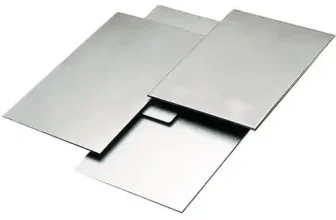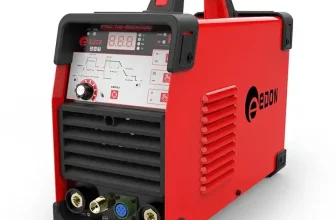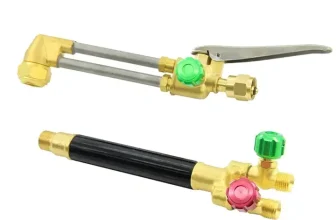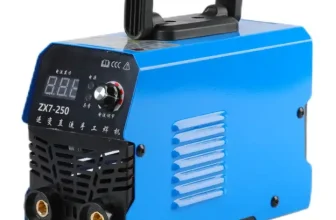A Pulse Metal Inert Gas (MIG) Welder is an advanced type of welding equipment that uses a method known as pulse welding. It involves the use of a power supply that produces electrical power in pulses, rather than a steady stream. These power pulses create a cycle of varying energy levels that allow for a more controlled and efficient welding process. This approach significantly reduces issues like spatter, making the weld smoother and cleaner. Pulse MIG Welders are commonly used across several industries, primarily for their capability to work effectively on a range of metal types and thicknesses. Their versatility makes them an invaluable tool for welders.
Brief History and Development of Pulse MIG Welder
Pulse MIG welding technology emerged in the late 20th century, revolutionizing the welding industry. The inception of this technique addressed several drawbacks associated with the traditional MIG (Metal Inert Gas) welding. Initially, this method was exclusive to high-end welding operations due to the complexity of its equipment and high costs. However, with advancements in technology and increased manufacturing efficiency, Pulse MIG welders have become readily accessible in recent years.
The journey of Pulse MIG welding began in the aviation and automobile industries where production of precision parts was crucial. The traditional MIG welding process often led to heat distortion and spatter problems, reducing the quality of finished parts. The introduction of Pulse MIG technology mitigated these issues by using a controlled weld pool, leading to neater, high-quality welds.
In recent years, this welding technique has cemented its significance in various industries, from automotive and aerospace to construction and robotics. Its continued evolution reflects in modern Pulse MIG welders that offer even greater precision, reliability and versatility. This rich history and development of Pulse MIG welding emphasize its vital role in our technology-driven world.
Working Principle of Pulse MIG Welder
Understanding the Pulse Mechanism
The pulse mechanism in a Pulse MIG welder is central to its operation and is what sets it apart from traditional MIG welders. This process involves using a high peak current to melt the wire and create a weld puddle, followed by a low-background current to maintain the puddle without adding more filler metal. This cycle repeats hundreds or even thousands of times per second.
The term ‘pulse’ comes from this rapid alternating between high and low currents. Between the high current (or pulse) and lower current periods, there is a brief moment when no current is applied. This pause allows time for the welder to avoid overheating and burning through the base material, particularly thin metals. This pulsing reduces the total heat input, allowing for cooler welding which reduces warping and burn-through on thinner materials.
This controlled approach ensures a stable arc and greater penetration, which ultimately results in a cleaner, stronger weld. The high pulse frequency also minimizes spatter and distortion, making pulse MIG welding a preferable choice for applications requiring precision and neatness. It is this pulsed contribution that makes pulse MIG welders a versatile tool in a variety of complex welding situations.
In pulse MIG welding, you have excellent control over the heat input while maintaining high weld quality. This makes the welder suitable for different materials and thicknesses, offering welders the ability to perfectly modify the welding process to meet their specific needs. Thus, understanding the pulse mechanism is vital to mastering the use of a pulse MIG welder.
Detailed Explanation of the Welding Process
Pulse MIG welding is a refined process that intricately manages the science of heat transfer. The electrical current used in this type of welding alternates between a high peak current and a lower background current, hence the term ‘pulse’.
The process begins when the power source sends a high peak current, generating a droplet at the wire’s end. This high peak current prevents the wire from contacting the molten pool, courtesy of the created magnetic field, often referred to as a “pinch effect”. This pinching separates the droplet from the electrode wire with great precision.
Once this droplet’s detachment is successful, the power supply decreases the current to a lower, background level. This reduction in current helps to maintain the molten weld pool’s stability while preventing further transfer of droplets. Still, it’s adequate to sustain an arc until the next pulsation.
The incessant high peak and low-level current pulses occur multiple times per second, which not only stabilizes the weld pool but also reduces the heat input, mitigating distortion and burn-through in the workpiece. Unlike traditional MIG welding, where a constant current is used, pulse MIG welding combustion of wire feeder occurs in a regulated, calculated fashion.
The result is a well-controlled, reduced spatter welding process with high-quality fusion and penetration. The automated process yields higher productivity, cleaner welds, and wide applicability across various metals and their alloys.
The beauty of pulse MIG welding lies in its ability to provide superior control of the heat input and weld bead profile, enabling welders to achieve exceptional results even in challenging situations. It’s a smart modification of the traditional MIG welding process that facilitates higher performance and efficiency.
Types of Pulse MIG Welder
Single Pulse MIG Welders
Single Pulse MIG Welders are a type of pulse MIG welders that operate using a simplified pulsed current system. They use a single current pulse during the welding process. When welding with a single pulse MIG welder, two distinct periods are involved, known as the peak current period and the background current period.
During the peak current period, the powerful pulse of electricity creates the welding arc, melting the metal in order to form the weld pool. This pulse is brief but intense, ensuring a deep penetration into the material being welded. Following the peak current pulse is the background current period, during which the voltage falls, allowing the weld pool to cool and solidify.
The purpose of this cyclic pattern is to allow the welder to create strong, high-quality welds while reducing the risk of distortion, overheating, or damaging the material due to excessive heat input. Single pulse MIG welders offer excellent control over the welding process and are particularly beneficial for novice welders who wish to optimize the balance between penetration and heat input.
Double Pulse MIG Welders
Double Pulse MIG Welders are more advanced and a step up from their single-pulse counterparts. As implied by the name, the double pulse MIG welder employs an ingenious two-pulse mechanism. This intricate process involves a base pulse which melts the consumable wire electrode and a second pulse that propels the melted material across the arc into the weld pool.
The second pulse is finely tuned to have a higher peak current, resulting in enhanced control, and consequently, improved weld aesthetics. This dual pulse action creates a ripple effect on the weld, producing a TIG-like cosmetic finish that many industries prefer.
Interestingly, the double-pulsing process also reduces the overall heat input into the material, minimizing distortion in heat-sensitive alloys or thin materials. This characteristic makes double pulse MIG welders invaluable in industries that work with such materials, like automotive and aviation industries.
To sum up, double pulse MIG welders provide fine control over the welding process, significantly elevate the aesthetic result of the weld, and minimize distortions on heat-sensitive or thinly gauged materials. Hence, they are preferred for applications that require enhanced precision and quality of the weld.
Synergic Pulse MIG Welders
Synergic Pulse MIG Welders represent a significant advancement in the world of welding. The term ‘synergic’ is derived from the concept of ‘synergy’, which means the components of the system work together to achieve a result that is otherwise hard to accomplish individually. This is impeccably mirrored by the Synergic Pulse MIG Welders.
In Synergic Pulse MIG Welders, welder settings are interconnected, and can automatically adjust themselves based on the user’s input. This is done with the help of a microprocessor. After the user sets the wire feed speed, the machine adjusts all other parameters such as peak current, background current, pulse width, pulse frequency, etc., to achieve optimal welding conditions. This takes a considerable amount of manual work out of the equation, making the welding experience easier and more streamline for the user.
Another big advantage of Synergic Pulse MIG Welders is the level of control they offer. The user can effectively influence the shape and breadth of the arc, which can be crucial for specific types of welding work. This control also offers better penetration and less splatter, which can boost the quality and appearance of the weld.
In essence, Synergic Pulse MIG Welders are designed to offer an enhanced and more efficient welding experience. They are well worth considering if you’re engaging in professional welding work, looking for a higher degree of control, or if you simply want to leverage the latest technology to make your welding tasks easier.
Key Benefits and Uses of Pulse MIG Welders
Benefits of Using a Pulse MIG Welder
Pulse MIG welders are widely recognized for their extensive range of benefits in modern welding projects. They are particularly known for their versatility and applicability in dealing with a variety of metal types and thicknesses, which makes them highly sought-after choices in numerous industries.
Firstly, pulse MIG welders offer enhanced weld quality. This machinery operates by pulsing the current between a high peak current and a lower background current instead of maintaining a steady level. This mechanism allows for better control over the heat input, thereby reducing warping and distortion of the workpiece. As such, they give a cleaner, more aesthetically pleasing weld bead with less spatter.
Secondly, they offer increased efficiency. With faster travel speeds, pulse MIG welders speed up the welding process without compromising on the quality of the work, leading to increased productivity. They also enable welders to weld in all positions, including overhead and vertical, thereby offering greater convenience.
A noteworthy benefit is the reduced fume generation by pulse MIG welders, contributing to a safer and more comfortable work environment. They also minimize the quantity of filler metal used, thereby reducing the overall operation costs.
Furthermore, pulse MIG welders provide excellent penetration control, which is vital when working with thin metals. They help prevent burn through, thereby expanding the range of materials that can be welded.
Finally, pulse MIG welders are user-friendly, with many models offering preset programs for different materials and gas combinations. This simplifies the process, especially for novice welders, and reduces setup time significantly.
In summary, from enhancing weld quality to improving efficiency and promoting a safer working environment, pulse MIG welders offer a gamut of advantages that underline their importance in today’s welding industry.
Applications in Different Fields
Pulse MIG Welders are found to be extremely versatile, thus they are applicable in numerous fields. They are widespread within the automotive industry where they are used in the assembling of car bodies, manufacturing of trailers, or even in the repair of vehicles because their ability to weld thin materials effectively reduces the risk of warping or ‘blow through’.
In addition to automotive, they’re utilized in construction, particularly in the fabrication and assembly of heavy-duty machinery and structures. Their ability to produce quality welds quickly makes them ideal for such large-scale usage.
Not only confined to the earth, but the aerospace industry also extensively uses Pulse MIG Welders for the creation and repair of aircraft and spacecraft parts. Given the high safety standards of the industry, the reliability and durability of the welds produced by these welders is especially critical.
Marine fabrication, from shipbuilding to repair work, also benefits from pulse MIG welding. The welders’ ability to work with a variety of metals – including those commonly found in marine environments like stainless steel and aluminum – makes them particularly suitable.
Furthermore, due to their precision and ability to produce clean and aesthetically pleasing welds. Pulse MIG Welders are employed in the making of jewelry and art, enabling artists to work with various kinds of metals to realize their creative visions.
Finally, pulse MIG welding is starting to find its way into the realm of robotics and automation. As we move further into the age of automation, the demand for high-speed, high-quality welding techniques will only increase, making pulse MIG welding an ideal candidate.
Overall, the application of Pulse MIG Welders is extensive across a spectrum of industries, proving its versatility and effectiveness.
How to Choose the Right Pulse MIG Welder
Factors to Consider When Buying
When considering the purchase of a Pulse MIG Welder, several factors come into play to ensure you get the best equipment for your needs.
-
Nature of Work: Different Pulse MIG Welders are suited for different tasks. The nature of your work, whether casual or industrial and the materials you will most often weld, will determine what type of Pulse MIG Welder you need. For example, thinner and aluminum materials often require Pulse MIG Welders that have a lower heat input to avoid destroying the material.
-
Power Requirements: Depending on whether you are operating in a home setting or an industrial place, the power capacity may differ. Therefore, you should consider a welder that matches your power supply.
-
Duty Cycle: This refers to the amount of time a welder can operate before it needs to cool down. If you need to weld constantly, consider a Pulse MIG Welder with a high duty cycle.
-
Features and Controls: Modern Pulse MIG Welders come with controls for wire speed, amperage, and voltage. These provide you with more control over your welding process and improve the quality of your welds.
-
Price: Welding machines vary in terms of their cost. Set a budget before you even start looking then find the best machine that fits within that.
-
Brand Reputation: Brands with a long-standing reputation tend to produce more reliable and durable equipment. Read reviews and find information about the manufacturer’s reputation before making a decision.
By taking all these factors into consideration, you can be sure to choose a Pulse MIG Welder that will serve your needs effectively, providing you with durable and quality welds.
Popular Brands in the Market
When selecting a pulse MIG welder, it’s also crucial to consider the manufacturer. Some of the renowned brands that have earned a solid reputation for quality and innovation in the welding technology industry include:
-
Lincoln Electric: Established in 1895, Lincoln Electric has been at the forefront of welding technology for over a century. They offer a wide selection of MIG welders, including pulse models, that are appreciated for their durability and performance.
-
Miller Electric: Miller Electric is another reputable manufacturer that offers a comprehensive range of welding equipment. Their pulse MIG welders are known for their reliability, ease of use, and advanced technology.
-
ESAB: ESAB is a global leader in the production of welding and cutting equipment. Their pulse MIG models are esteemed for their versatility and precision, ideal for a variety of materials and applications.
-
Fronius: Fronius is an Austrian company known particularly for their sophisticated and highly efficient welding solutions. Their TransPuls Synergic line is particularly revered within the pulse MIG category.
-
Hobart Welding Products: Hobart offers a range of robust and affordable pulse MIG welders suitable for both professional and home use.
Remember, it’s essential to choose a brand that offers excellent after-sales service and provides a good warranty. Reading user reviews can also provide insights on the experiences of others with these brands.
Safety Measures While Using a Pulse MIG Welder
Preventive Measures While Using
Safety when using a Pulse MIG welder is of fundamental importance due to the inherent dangers of electrical shocks, fumes and gases, and fire risks. These are a few key preventive measures to adopt for safe usage:
-
Proper Protective Gear: Always wear flame-resistant gloves and clothing for protection against sparks. A helmet with a side shield provides essential safety for your eyes and facial area from radiation, sparks, and spatter.
-
Good Ventilation: Welding produces fumes and gases that can be harmful if inhaled in large quantities. A well-ventilated area or local exhaust system can help combat this risk.
-
Secure Connection: Ensure all electrical connections are secure before starting your work. Missing ground connections or breaks in insulation can lead to electrical shocks.
-
Regular Maintenance: Regular checkups and maintenance of the machine are fundamental. An equipment malfunction can lead to electrical, fire, or explosion hazards.
-
Fire Safety Measures: Ensure a safe working environment free from combustible materials. Always have a fire extinguisher at the ready when you are welding, in case of emergency.
-
Training: Finally, one should be adequately trained in both the operation of the Pulse MIG welder and safety procedures. This can drastically minimize the risk of accidents.
Remember, safety should never be compromised when it comes to operating heavy machinery like a Pulse MIG Welder. Strict adherence to these preventive measures can serve to protect the operator and those in the surrounding environment.
Dealing with Common Risks and Problems
Even though Pulse MIG Welders are designed with safety in mind, they’re not without hazards. Most of these risks can be mitigated with proper safety practices and quick actions in case of an emergency. Here’s how to deal with the most common risks and problems.
Firstly, welding often exposes the welder to high-intense light, which may cause ‘arc eye’ or ‘welder’s flash’, a painful condition where the cornea is inflamed. The best protection against this is wearing a proper welding helmet with the right shade of protection. This should be combined with wearing safety glasses underneath for the best protection.
Secondly, the possibility of electric shock is not uncommon in welding. To mitigate this, ensure to properly insulate yourself from the equipment and the metal being welded. Gloves should be dry, and worn whenever handling the electrode holders. Avoid conducting welding operations in wet areas, as water increases the risk of electrocution.
Thirdly, exposure to fumes and gases can be harmful. Always work in a well-ventilated area to avoid inhaling these fumes. Use exhaust or ventilation systems to remove welding fumes from the work area, and wear respiratory protection equipment if necessary.
Lastly, due to the nature of welding, fire and burns are also risks. Welding produces sparks and spatter that can ignite flammable and combustible materials. Always remove potential fire hazards from the working area before starting welding operations. Also, wear flame-resistant clothing, gloves, and boots to avoid burns.
In case of an emergency, a well-stocked first aid kit should be within reach. Also, welders must be aware of the location of safety showers, eye wash stations and fire extinguishers. It is important to maintain a safe work environment and to be constantly vigilant when operating a Pulse MIG welder.
Remember, welding is a profession where safety should never be compromised. Understanding the risks and how to manage them can ensure a long, productive, and healthy career in welding.
Conclusion
Recap of Main Points
The Pulse MIG Welder is a remarkable piece of technology capable of delivering smooth, clean welds with precision control. This welding device is distinct for its pulsing mechanism, which alternates between high peak currents and low-level currents to allow for better heat management and inconsequential warping of the metal.
There are three types of Pulse MIG Welders – Single, Double, and Synergic – which offer different functionalities and capabilities, and the choice depends on specific needs. Whether one is part of the automotive industry, aerospace or any metal fabrication endeavours, considering its quality result, a Pulse MIG Welder proves to be an advantageous tool offering significantly reduced spatter and improved fusion.
Choosing the right Pulse MIG Welder requires considering several factors such as your specific needs, budget, usage frequency, and specific welding tasks. Brands like Miller, Lincoln Electric and Hobart stand out in the market, offering a variety of Pulse MIG Welders to choose from. But while the process holds unique advantages, it is not without risks. Therefore, implementing safety measures is essential when using this equipment.
Embracing a Pulse MIG Welder in your toolbox can elevate both the quality and efficiency of your welding tasks. As technology advances in the welding industry, it is crucial to stay abreast with the latest tools like the Pulse MIG Welder that provide a considerable edge over traditional methods. Whether you are a seasoned professional or just a hobbyist welder, investing time to understand and utilize a Pulse MIG Welder could make a substantial difference to your welding outcomes.
Call to Action for Readers
As you now understand, pulse MIG welders are an excellent investment, offering numerous benefits in varied applications. If you work in fields such as fabrication, automotive repair, or any other industry involving metal joining, we’d highly recommend exploring this advanced welding technology. Remember, before purchasing, consider your specific needs, budget, and the product’s brand reputation. Don’t ever compromise on safety, and ensure you are well-versed in handling and maintenance procedures to maximize your pulse MIG welder’s performance and lifespan. Embrace the new wave of welding technology and take your productivity and efficiency to the next level with pulse MIG welding.







